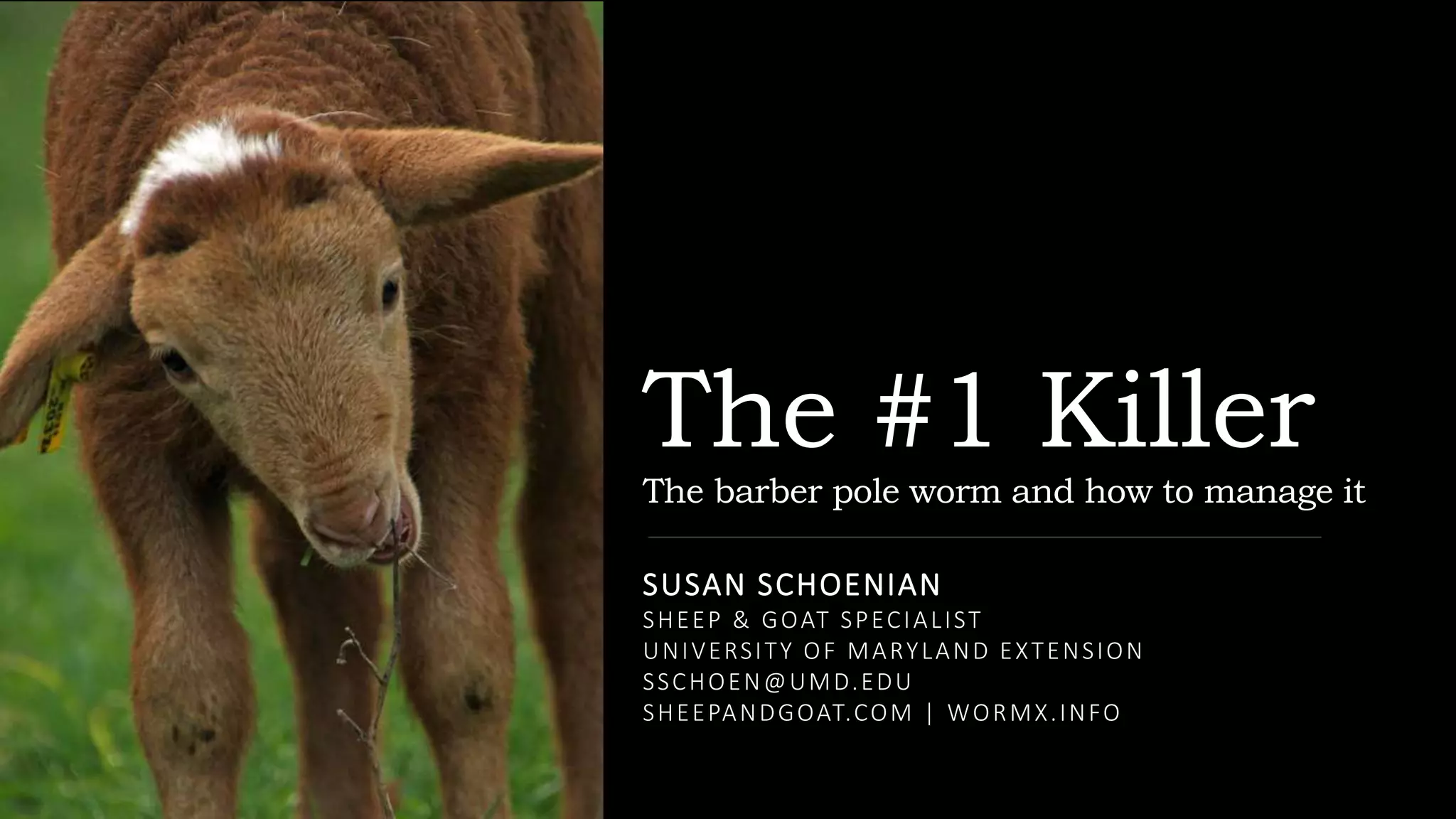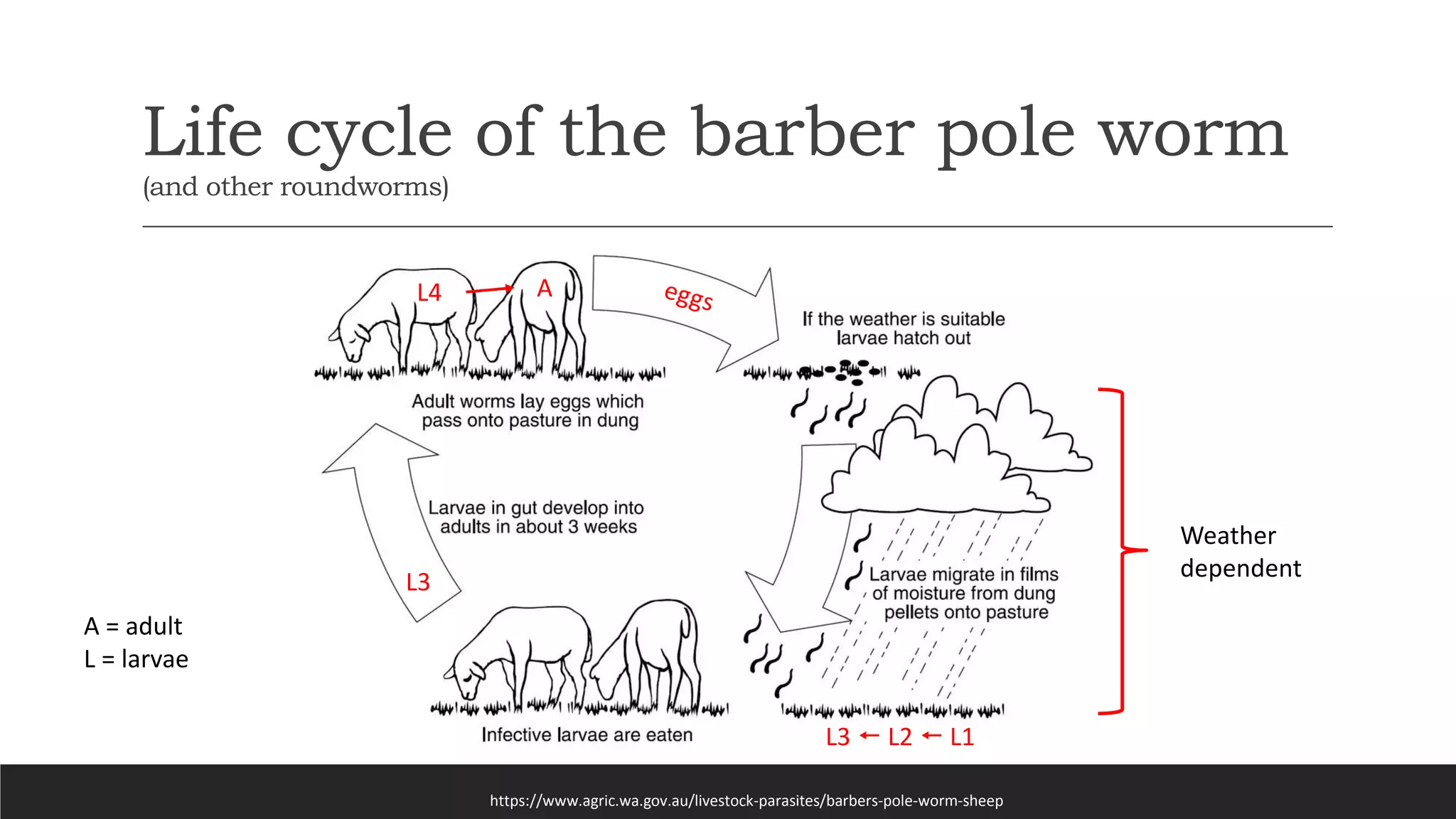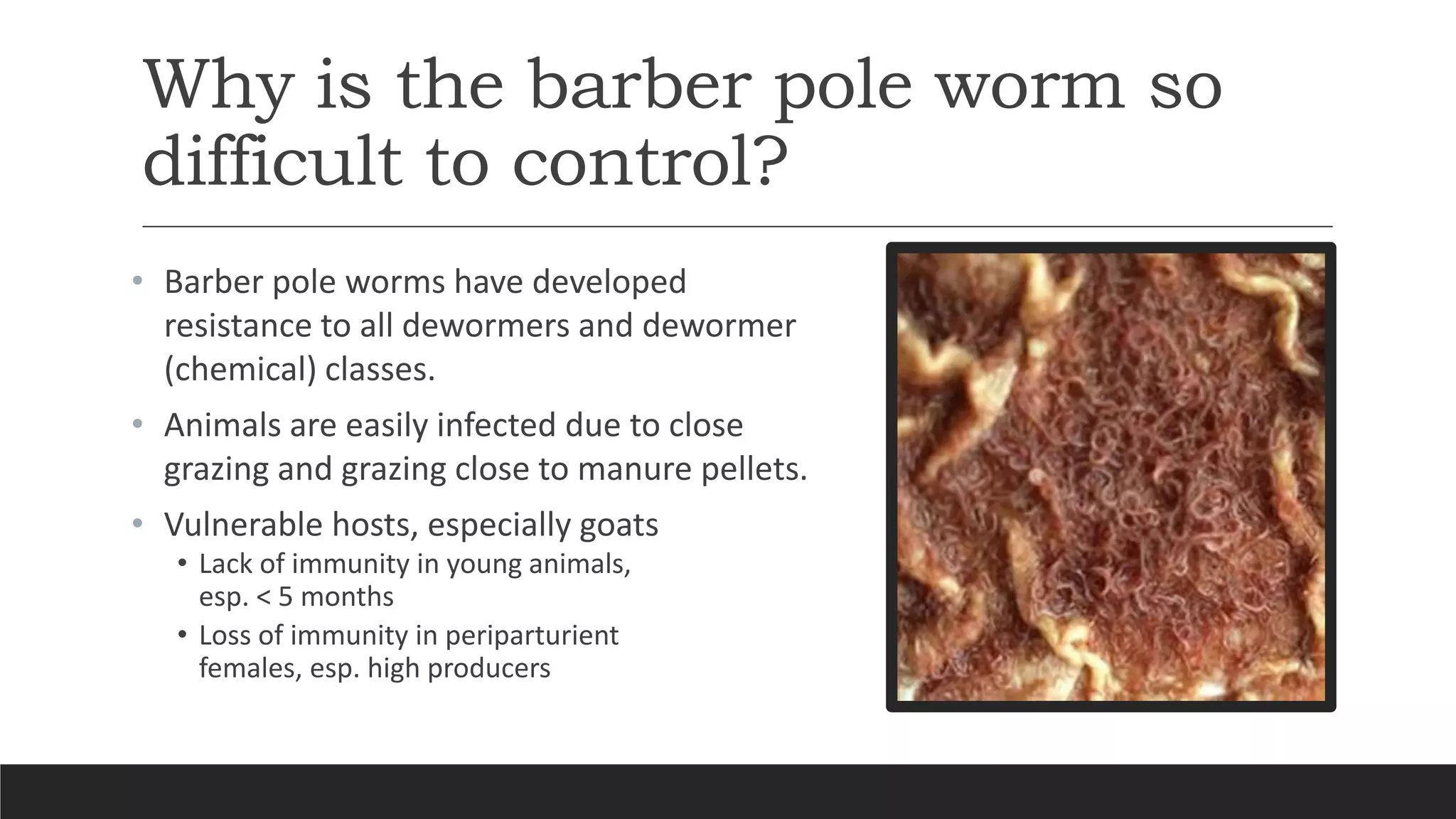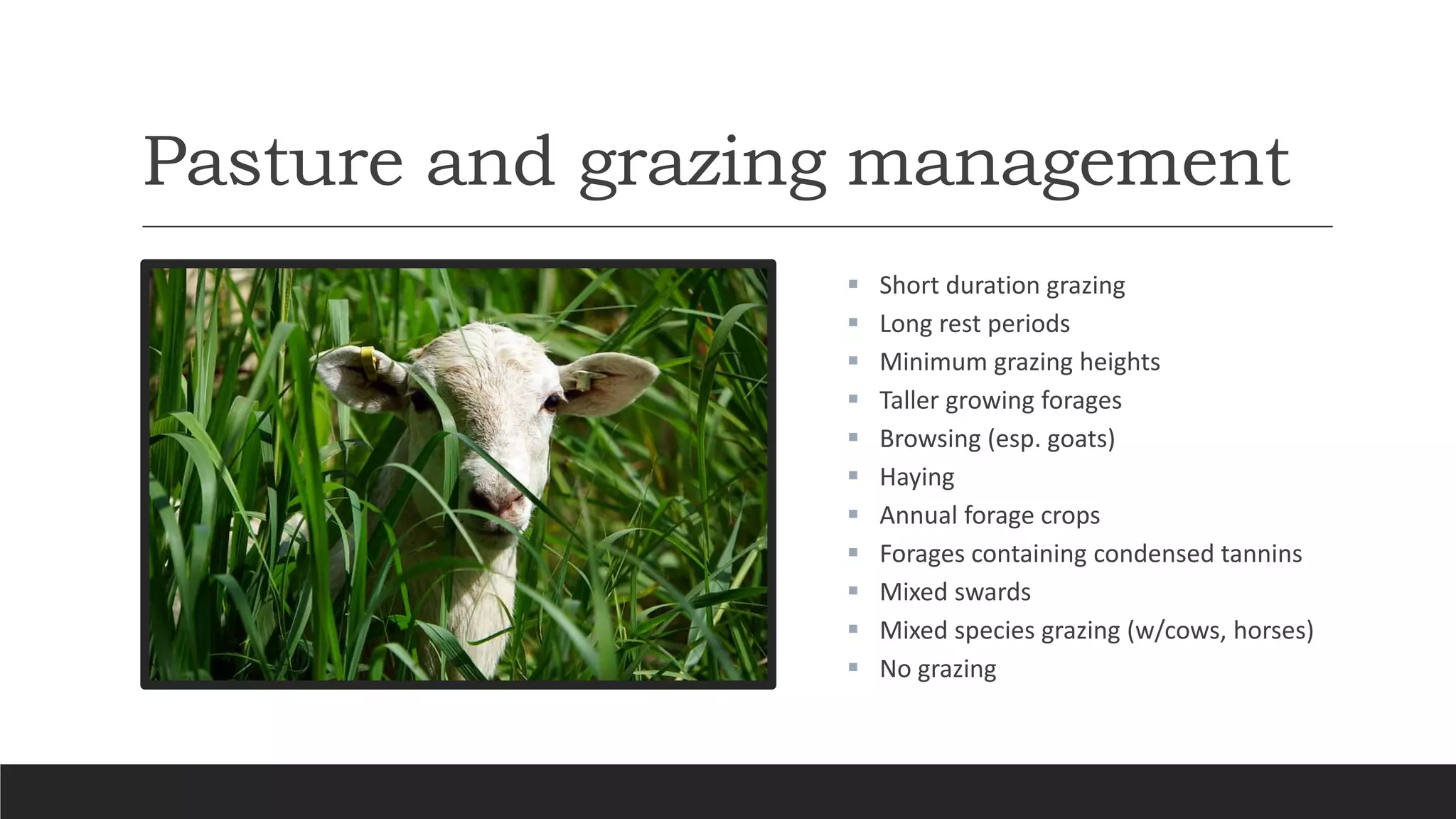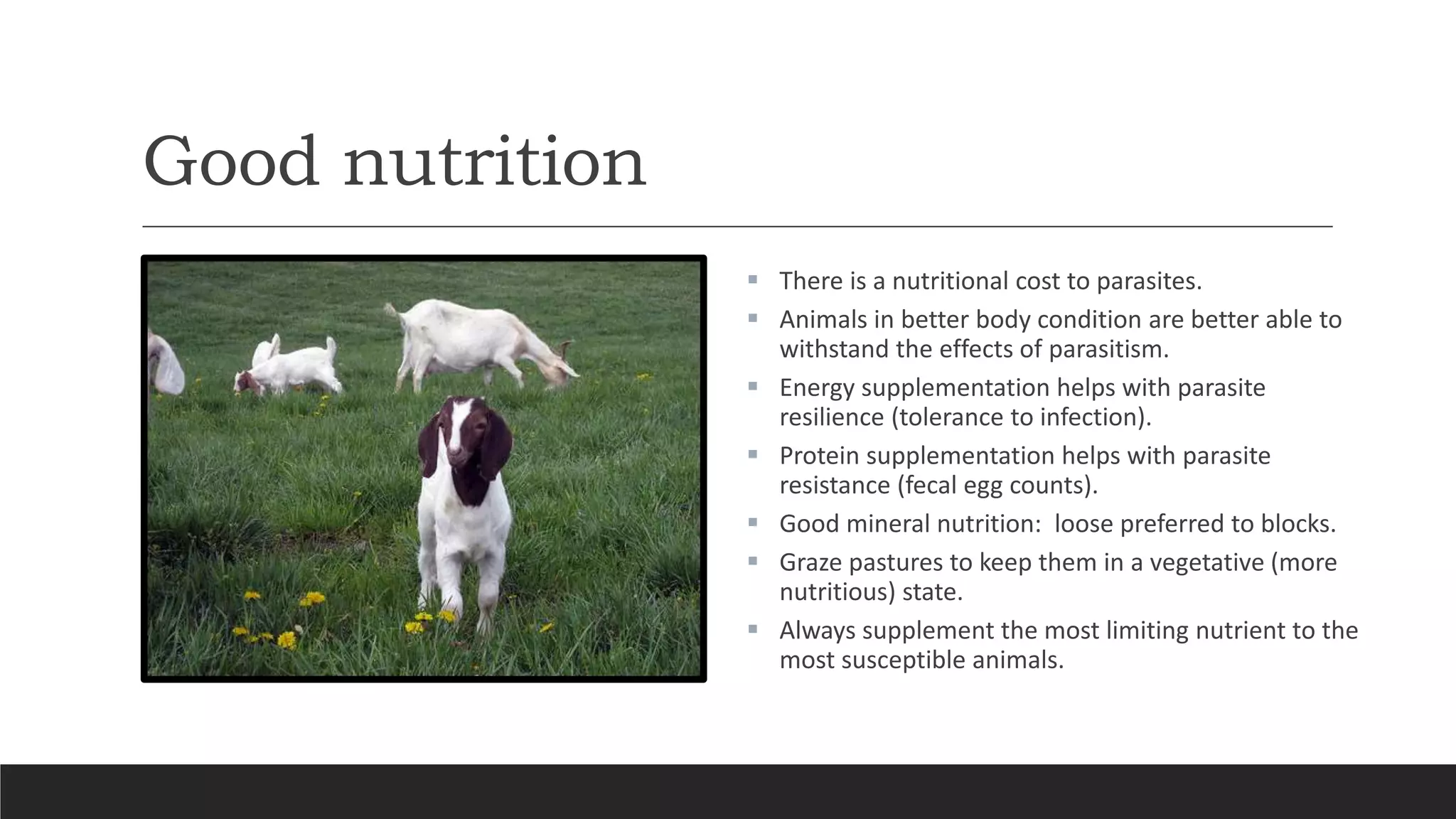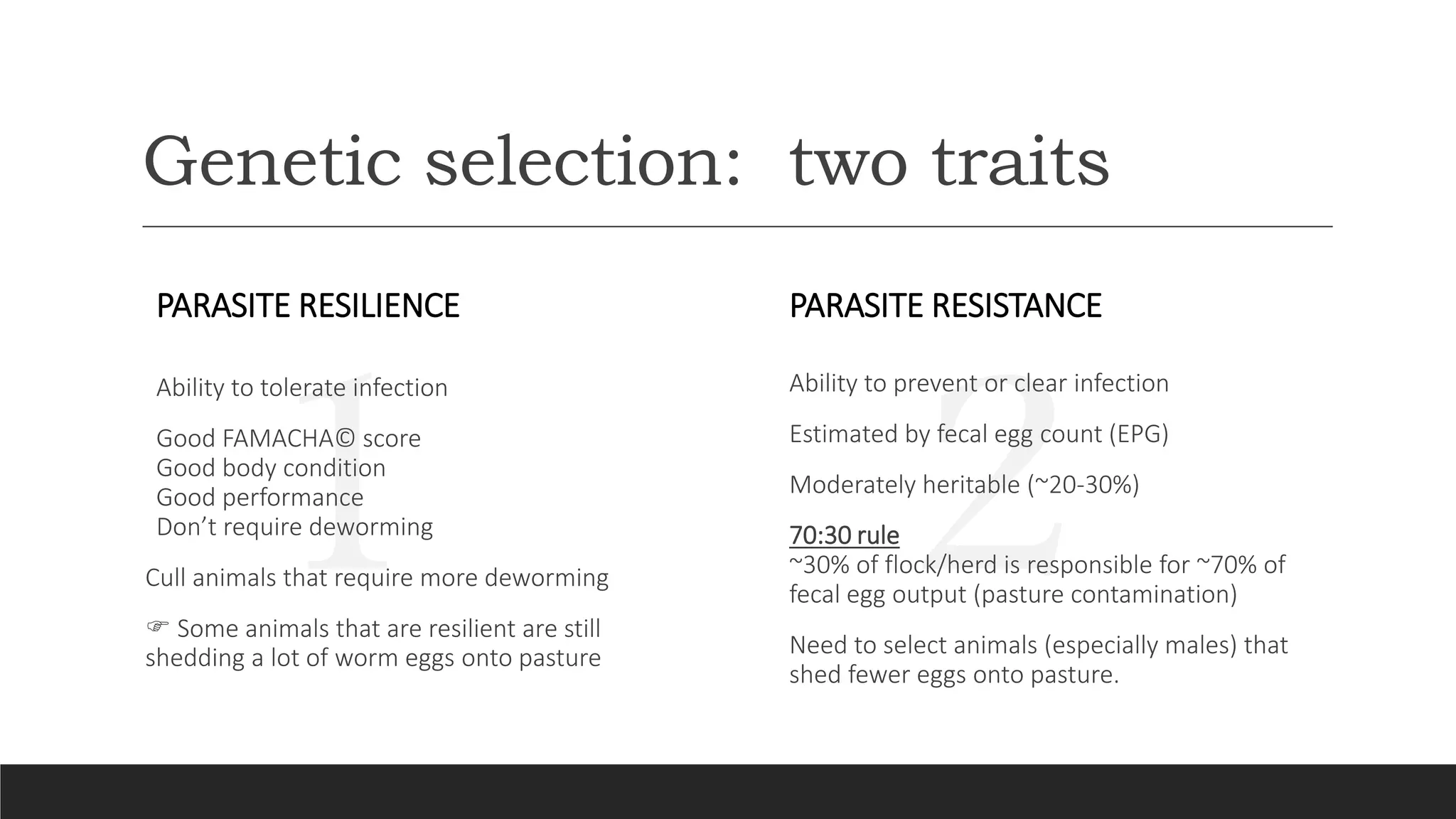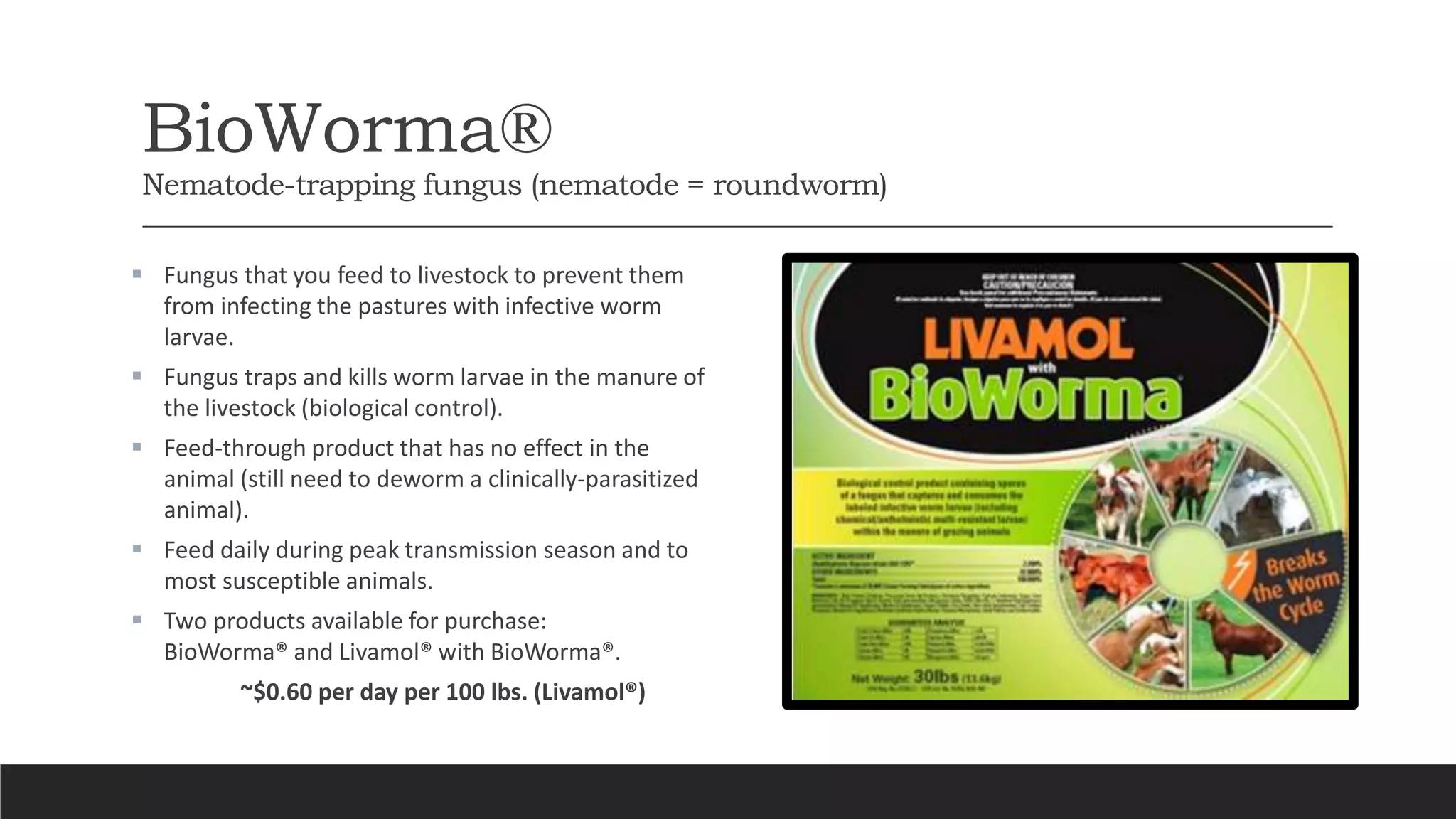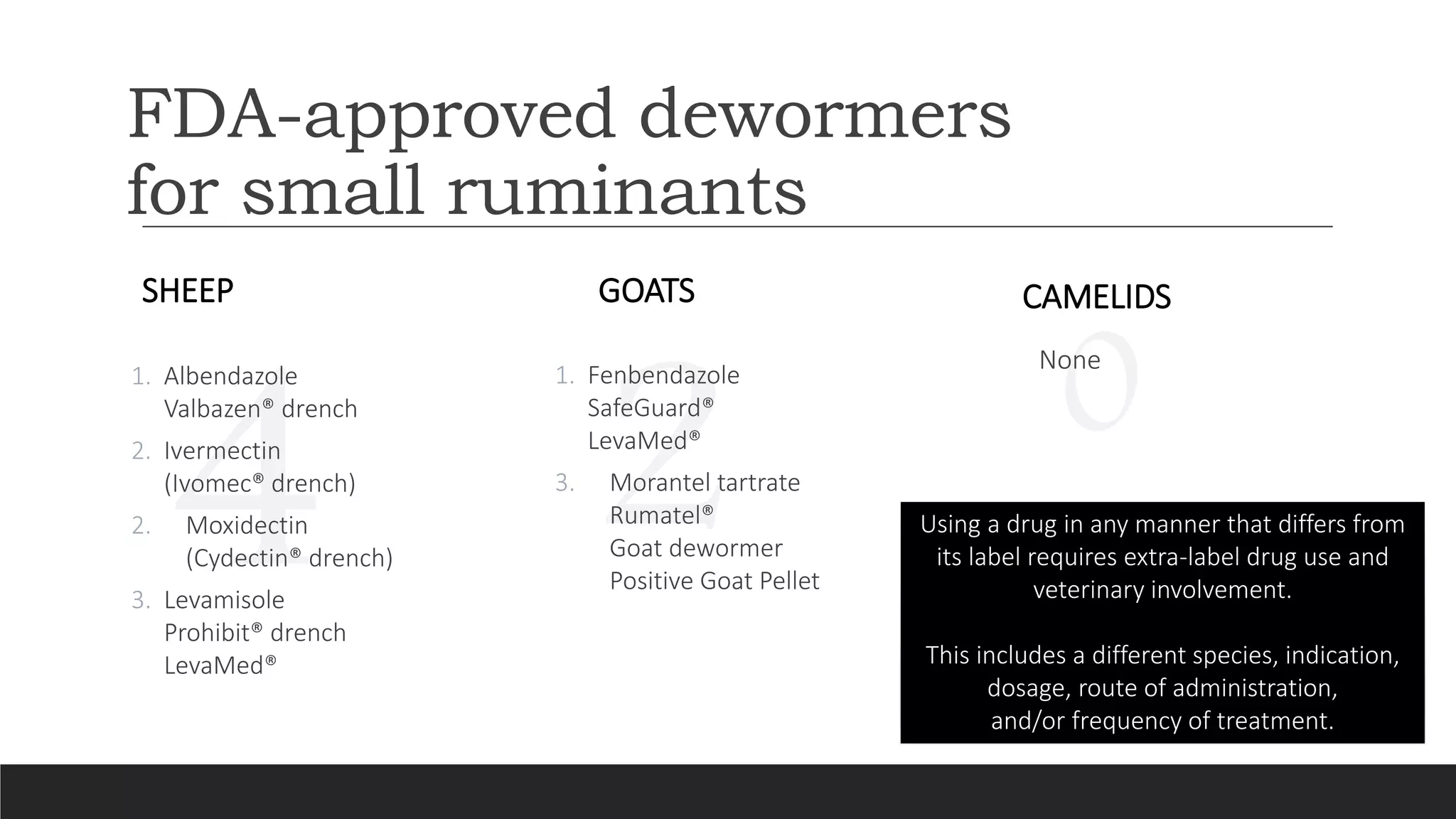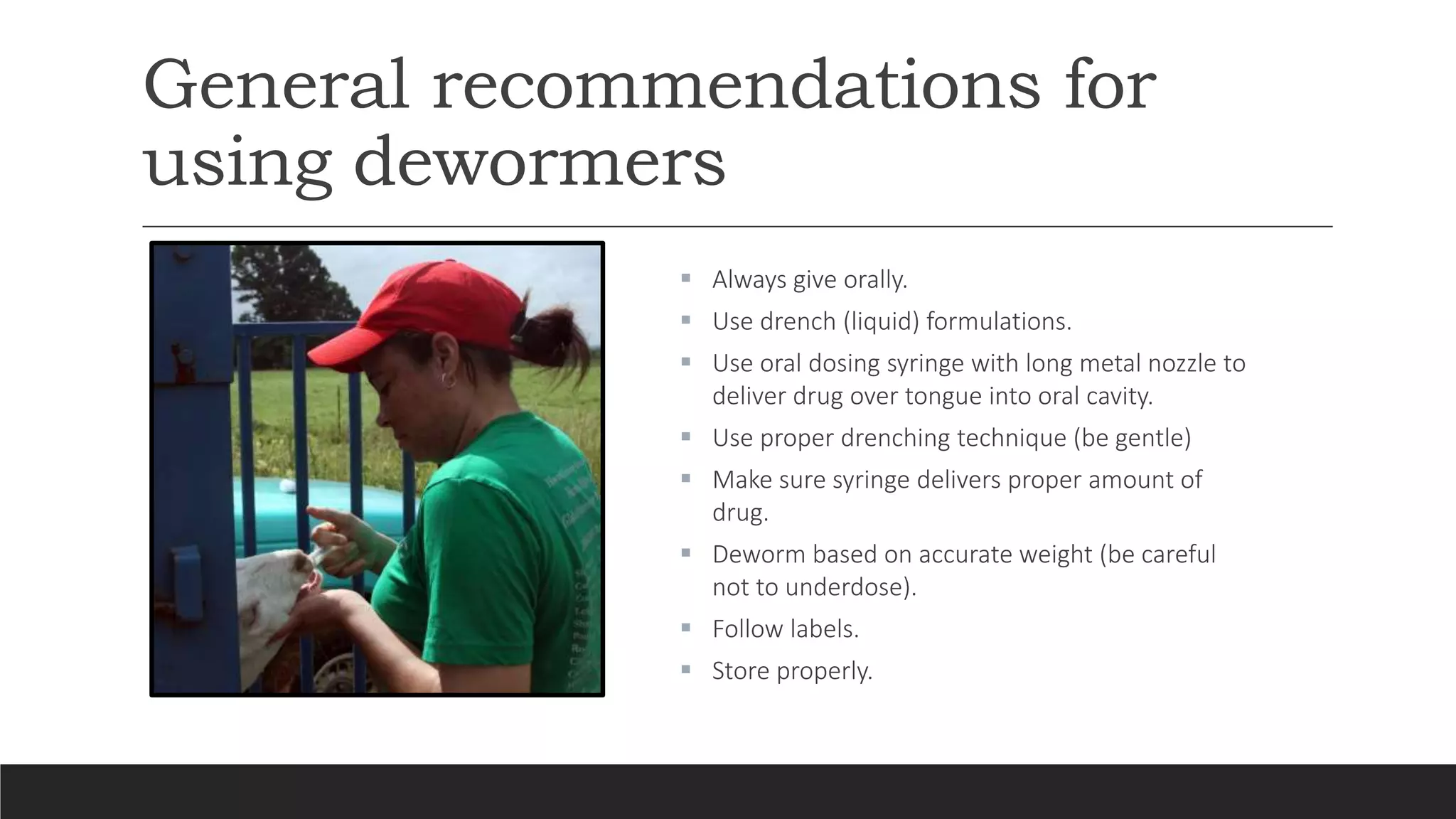The barber pole worm (Haemonchus contortus) is a highly pathogenic blood-sucking parasite of small ruminants. It has a short lifecycle that is favored by warm, moist conditions. Signs of infection include anemia, bottle jaw, and ill thrift. Managing the parasite involves improving host immunity through good nutrition, genetics, and grazing management. Deworming must be targeted and combine multiple treatment approaches due to widespread dewormer resistance on farms. Testing is needed to determine which dewormers still work in a given location.
